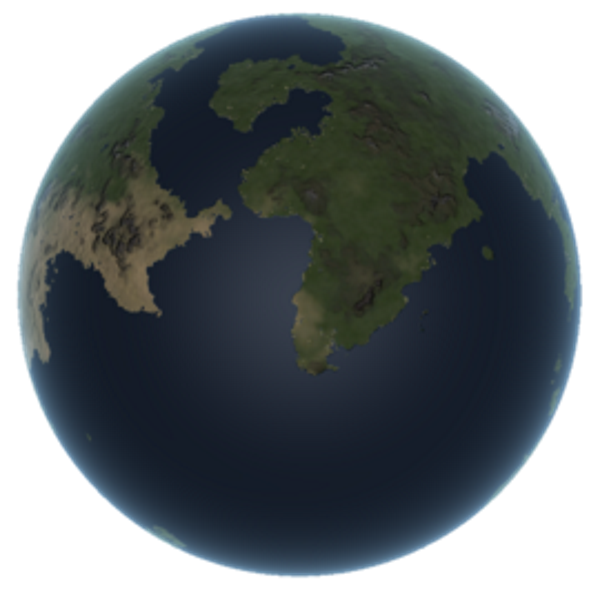Chevspendi: Difference between revisions
Slavic blin (talk | contribs) mNo edit summary |
Slavic blin (talk | contribs) mNo edit summary |
||
| Line 38: | Line 38: | ||
==Politics == |
==Politics == |
||
===Government === |
===Government === |
||
| − | The Chevpsendic horde was governed as a tribal federation in which each tribe had a Cynaz which would act as an oligarch. As time progressed |
+ | The Chevpsendic horde was governed as a tribal federation in which each tribe had a Cynaz which would act as an oligarch. As time progressed tribes merged and some Cynaz even began to rule over multiple tribes. By the end of the horde's history only four Cynaz remained. |
===Subdivisions=== |
===Subdivisions=== |
||
It is disputed just how many tribes were in the Chevspendic horde as many of these were so culturally similar with eachother they acted almost as vassal states. Most experts place it as 22 tribes at their peak and three at their lowest. |
It is disputed just how many tribes were in the Chevspendic horde as many of these were so culturally similar with eachother they acted almost as vassal states. Most experts place it as 22 tribes at their peak and three at their lowest. |
||
| Line 63: | Line 63: | ||
The Chevspendic horde drew upon their tribes for the acquiring of levies in times of war. These were divided on a simple system of base twelve. 12 was a Ört komandasi (firing team), 8 öry komandasi made a Yris komandasi (battle team), 12 Yris komandasi was a Komandalik komandasi (command team) and 24 Komandalik komandasi was a Bakilaw komandasi (control team). |
The Chevspendic horde drew upon their tribes for the acquiring of levies in times of war. These were divided on a simple system of base twelve. 12 was a Ört komandasi (firing team), 8 öry komandasi made a Yris komandasi (battle team), 12 Yris komandasi was a Komandalik komandasi (command team) and 24 Komandalik komandasi was a Bakilaw komandasi (control team). |
||
| − | The most Infamous part of the Chevspendic horde was their use of the cavalry rifleman. These riflemen were developed around firepower and armour at the cost of maneuverability in order to remain competitive against armoured vehicles. |
+ | The most Infamous part of the Chevspendic horde was their use of the cavalry rifleman. These riflemen were developed around firepower and armour at the cost of maneuverability in order to remain competitive against armoured vehicles. Their main armament consisted of handheld anti-tank guns which would also double as a blunt force lance if the Chevspendic got close enough. Many depictions of the Chevspendics feature them charging armoured vehicles with lances and sabers as a result, despite the fact that these were rarely actually used as lances and more often worked as Cavalrised howitzers. Cavalry riflemen eventually became the main fighting force, but retained primitive weaponry like their sabers as it created the expectation for the riders that they would need to get close enough for such weapons to be useful, which was thought to improve dicipline and morale. |
===Navy=== |
===Navy=== |
||
| − | The Chevspendic horde was nearly landlocked for a majority of its history and were more renowned for their land prowess than naval prowess. |
+ | The Chevspendic horde was nearly landlocked for a majority of its history and were more renowned for their land prowess than naval prowess. Some tribes still recognized the practicality of barges which could be dragged which would allow for amphibious assaults across lakes or rivers. |
<br/> |
<br/> |
||
==Economy== |
==Economy== |
||
===Taxation=== |
===Taxation=== |
||
| + | Tribute from city states was often made in the form of goods and services rather than taxes. Currency still found use for those who sought to trade with individuals outside of the horde. |
||
| − | <nowiki>###</nowiki> |
||
| − | ===Transport=== |
||
| − | <nowiki>###</nowiki> |
||
===Trade=== |
===Trade=== |
||
Trading was a linchpin of Chevspendic military prowess. Settled civilizations could specify individuals with such capacity nomadic civilizations could not compete. Many wars were fought for superior trading terms or to force tribes or city states into tributary status. Integration of conquered peoples like this gave access to settled technologies which were otherwise inaccessible. |
Trading was a linchpin of Chevspendic military prowess. Settled civilizations could specify individuals with such capacity nomadic civilizations could not compete. Many wars were fought for superior trading terms or to force tribes or city states into tributary status. Integration of conquered peoples like this gave access to settled technologies which were otherwise inaccessible. |
||
===Science=== |
===Science=== |
||
| + | Technological developement of the Chevspendics began to falter around 2080s but had been in decline relative to settled societies for much longer. The nature of nomadic civilizations prevented certain innovations and the way of life of the nomad became harder as the world got smaller and smaller. This makes the Chevspendics notable for one of the last hordes to still exist despite their technical backwardness. |
||
| − | <nowiki>###</nowiki> |
||
<br/> |
<br/> |
||
==History== |
==History== |
||
===Founding (1800~)=== |
===Founding (1800~)=== |
||
| + | records from this time are hard to find, and a majority of the history is semi-mythical. Still a significant amount of evidence supports the creation story that is largely accepted by modern Chevspendic-traditionalists. |
||
| + | |||
| + | In popular Chevspendic myth the founding of the Horde began from five surnic tribes spread out across the great north. These tribes routinely fought against eachother and made agreements about specific raiding territories. A rising individual named Atakti-ouli from the Siyah-Kon (black horse) tribe sought to end conflict between the tribes and unite them through diplomacy and negotiation. It is estimated this endeavor took him 20-30 years, and by the end of his life he declared himself Cynaz of the Siyah-Kon tribe, and the other cheifs to be Cynaz of equivelant rank functioning in an oligarchic governing structure. Upon his death, the Siyah-Kon tribe renamed itself to the Ataki-ouli tribe in his honour. His saber which was said to be blessed by the Mountain God himself was sealed away in his tomb in a cave in modern day [[Sarconia]] as per his wishes. The prophetic legend states in the time of his descendant's last breath he will awaken from death, sprout wings, and lead the last of the Chevspendics on a conquest of new lands in a higher realm and they will all become semi-God entities to dutifully watch over the rest of [[Kerbin]]. |
||
| + | |||
| + | ===Mass centralisation in Doren (1830~-1880~)=== |
||
| + | |||
| + | ===Conversion to Ebudism (1850~-1920)=== |
||
| + | |||
| + | ===Migration to Firesvar=== |
||
===Barkad rebellion=== |
===Barkad rebellion=== |
||
Revision as of 03:38, 26 May 2024
|
Chevspendic horde
Chevspendi
|
|||||
|---|---|---|---|---|---|
| File:Chevspendicbanner.png | |||||
| Motto | "Tiraniya kezinde ermek etwden göri erkindikte azap segedi" (Suffer in freedom rather than frolicing under tyranny) | ||||
| Common Name | Chevspendi | ||||
| Anthem | "Men ultimnin jarasin emdewge wäde berdim" | ||||
 |
|||||
| Demonym | Chevspendic | ||||
| Official languages | Chevspendic | ||||
| Currency | bartering | ||||
| Politics | |||||
| Capital | Barkad, Ozzak, Kyrat, Dugthail | ||||
| Government | Tribal oligarchy | ||||
| Foundation | 1830 | ||||
| Preceded by | n/a | ||||
| Followed by | Sahr | ||||
| Demography | |||||
| Ethnicities | Burric | ||||
| Population | 0.6 | ||||
| Area | 69'420 km² | ||||
Etymology
The name Chevspendic likely comes from the Chevspendic word Shevspendin meaning greater family.
Geography
The Chevspendic Horde traversed from doren, the great north, to kolus. They saw a variety of geography, from the tundra of the great north to the mamb river.
Climate
###
Biodiversity
###
Urban Areas
The Chevspendic horde was a nomadic civilization and generally avoided staying in one area for a long period of time. Regardless, common campgrounds included Makav, Kenoa, Ionas, Barkad, Ozzak, and Kyrat.
Politics
Government
The Chevpsendic horde was governed as a tribal federation in which each tribe had a Cynaz which would act as an oligarch. As time progressed tribes merged and some Cynaz even began to rule over multiple tribes. By the end of the horde's history only four Cynaz remained.
Subdivisions
It is disputed just how many tribes were in the Chevspendic horde as many of these were so culturally similar with eachother they acted almost as vassal states. Most experts place it as 22 tribes at their peak and three at their lowest.
Foreign Relations
Consistant foreign relations with the Chevpsendic horde was a difficult endeavor due to the decentralised ruling structure. Many nations like the city-state of Dugthail were mostly a trading partner while nations like Zokesia were likely targets for raiding.
Demographics
Languages and Culture
The Chevspendic language is of Burric origin and is most easily comparable to ancient Surnic. Linguistic research into Surnic has been aided by referring ancient sources to the Chevspendic language. Culture and traditions varied from tribe to tribe. In the early years of the Horde traditions were varied, but consolidated rapidly afterward. The Chevspendic horde took an assimilation policy to conquered peoples. City states that fell under the influence of the Chevspendi were either integrated or forced into a tributary system. Specified jobs like masonry and metallurgy are largely nonexistant in nomadic societies, which leaves mostly written sources by settled civilizations or works of art and literature by their tributary city-states.
Education
From the age of 8 upward Chevspendic children began firearm training. By the age of 15 Chevspendics partook in a coming of age ceremony which formalizes their adulthood status.
Occasionally more powerful tribes sent their children to the institutions of a settled civilization. Skills like literature, mathematics, philosophy, and administration entered the Horde as they taught their peers upon returning. This practice kept the average Chevspendic to nearly the same level of education as settled societies.
Religion
Chevspendics held onto their Ebudist faith no matter how many people they absorbed into the horde. Their practices in worship largely define the difference between Ebudism in Sahr and Ebudism everywhere else. During the Chevspendic invasion of Egercia Ebudist authorities from the horde and some brought in all the way from Surnay worked to convert their new Egercian subjects.
Military
Air
Air power of the Chevspendic horde was formed relatively late in their history from the flayer korpwsi (glider corps). These were originally gliders which were towwed by two or more Capals and held one observer. Scouting groups traveled ahead of the rest of the formation in a search line just close enough to send morse signals to eachother.
The nearly unanimous adoption of radar by the beginning of the 21st century led to the fitting of radar onto the gliders.
Army
The Chevspendic horde drew upon their tribes for the acquiring of levies in times of war. These were divided on a simple system of base twelve. 12 was a Ört komandasi (firing team), 8 öry komandasi made a Yris komandasi (battle team), 12 Yris komandasi was a Komandalik komandasi (command team) and 24 Komandalik komandasi was a Bakilaw komandasi (control team).
The most Infamous part of the Chevspendic horde was their use of the cavalry rifleman. These riflemen were developed around firepower and armour at the cost of maneuverability in order to remain competitive against armoured vehicles. Their main armament consisted of handheld anti-tank guns which would also double as a blunt force lance if the Chevspendic got close enough. Many depictions of the Chevspendics feature them charging armoured vehicles with lances and sabers as a result, despite the fact that these were rarely actually used as lances and more often worked as Cavalrised howitzers. Cavalry riflemen eventually became the main fighting force, but retained primitive weaponry like their sabers as it created the expectation for the riders that they would need to get close enough for such weapons to be useful, which was thought to improve dicipline and morale.
The Chevspendic horde was nearly landlocked for a majority of its history and were more renowned for their land prowess than naval prowess. Some tribes still recognized the practicality of barges which could be dragged which would allow for amphibious assaults across lakes or rivers.
Economy
Taxation
Tribute from city states was often made in the form of goods and services rather than taxes. Currency still found use for those who sought to trade with individuals outside of the horde.
Trade
Trading was a linchpin of Chevspendic military prowess. Settled civilizations could specify individuals with such capacity nomadic civilizations could not compete. Many wars were fought for superior trading terms or to force tribes or city states into tributary status. Integration of conquered peoples like this gave access to settled technologies which were otherwise inaccessible.
Science
Technological developement of the Chevspendics began to falter around 2080s but had been in decline relative to settled societies for much longer. The nature of nomadic civilizations prevented certain innovations and the way of life of the nomad became harder as the world got smaller and smaller. This makes the Chevspendics notable for one of the last hordes to still exist despite their technical backwardness.
History
Founding (1800~)
records from this time are hard to find, and a majority of the history is semi-mythical. Still a significant amount of evidence supports the creation story that is largely accepted by modern Chevspendic-traditionalists.
In popular Chevspendic myth the founding of the Horde began from five surnic tribes spread out across the great north. These tribes routinely fought against eachother and made agreements about specific raiding territories. A rising individual named Atakti-ouli from the Siyah-Kon (black horse) tribe sought to end conflict between the tribes and unite them through diplomacy and negotiation. It is estimated this endeavor took him 20-30 years, and by the end of his life he declared himself Cynaz of the Siyah-Kon tribe, and the other cheifs to be Cynaz of equivelant rank functioning in an oligarchic governing structure. Upon his death, the Siyah-Kon tribe renamed itself to the Ataki-ouli tribe in his honour. His saber which was said to be blessed by the Mountain God himself was sealed away in his tomb in a cave in modern day Sarconia as per his wishes. The prophetic legend states in the time of his descendant's last breath he will awaken from death, sprout wings, and lead the last of the Chevspendics on a conquest of new lands in a higher realm and they will all become semi-God entities to dutifully watch over the rest of Kerbin.
Mass centralisation in Doren (1830~-1880~)
Conversion to Ebudism (1850~-1920)
Migration to Firesvar
Barkad rebellion
The Lavro coup (2094-2096)
The Cynazdic purge (2096-2106)
===Settling in the Sahrlands (2106-2122)
Notable Events
###


